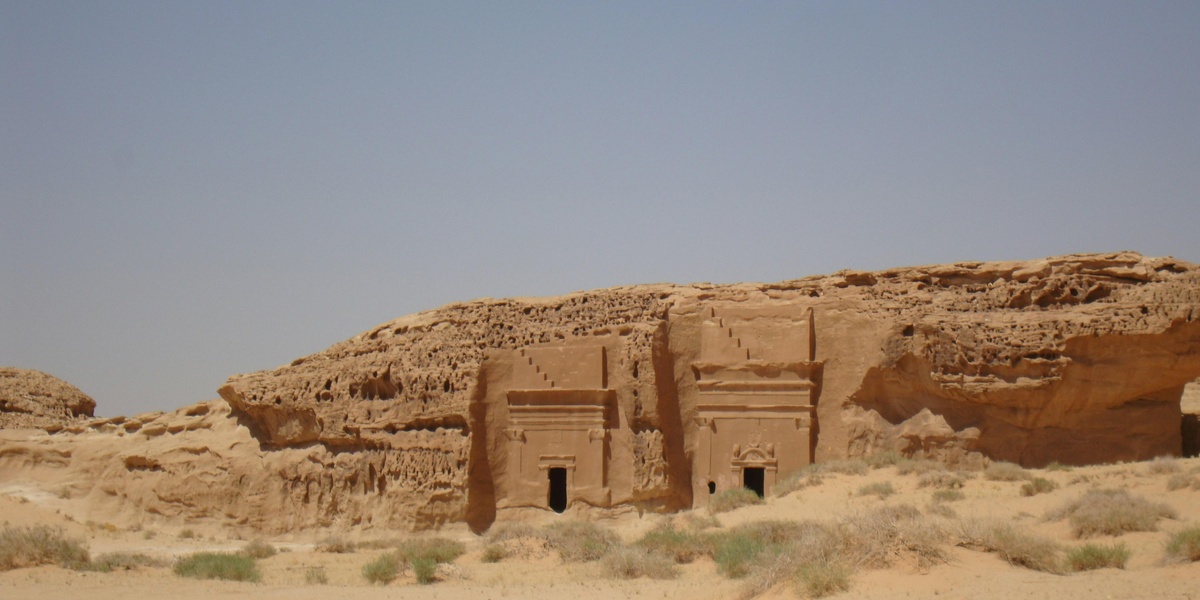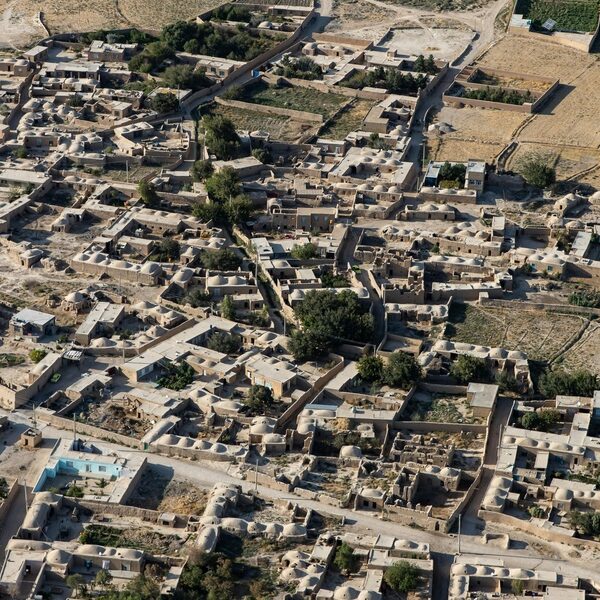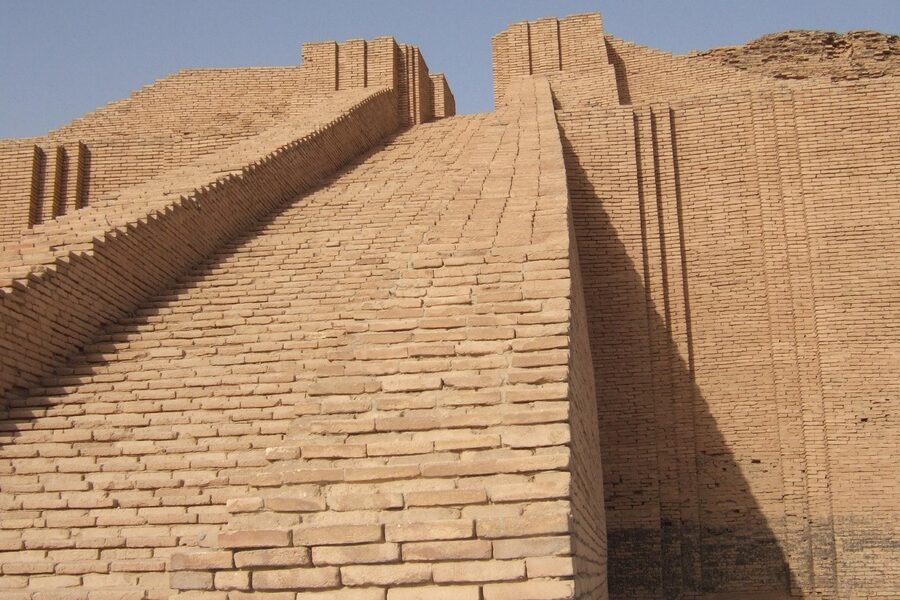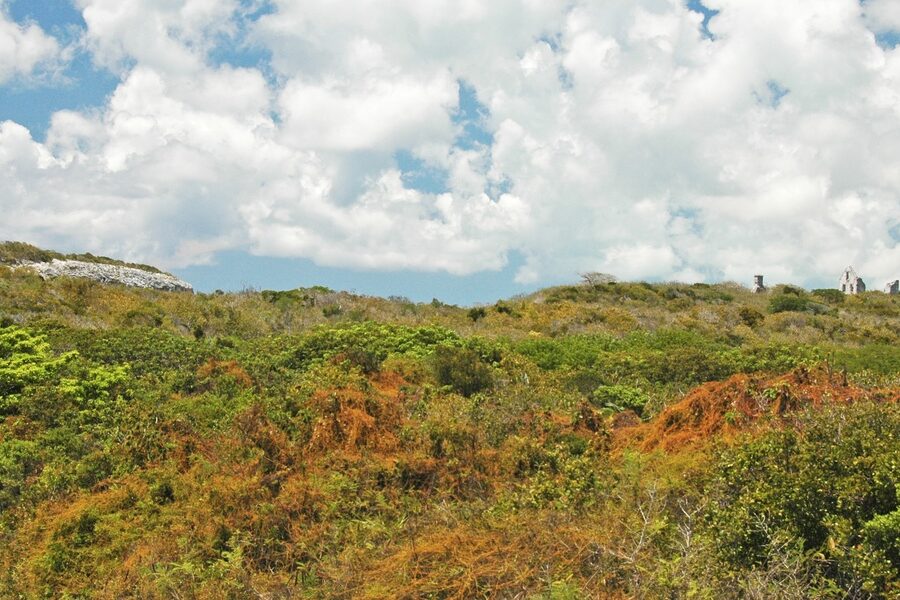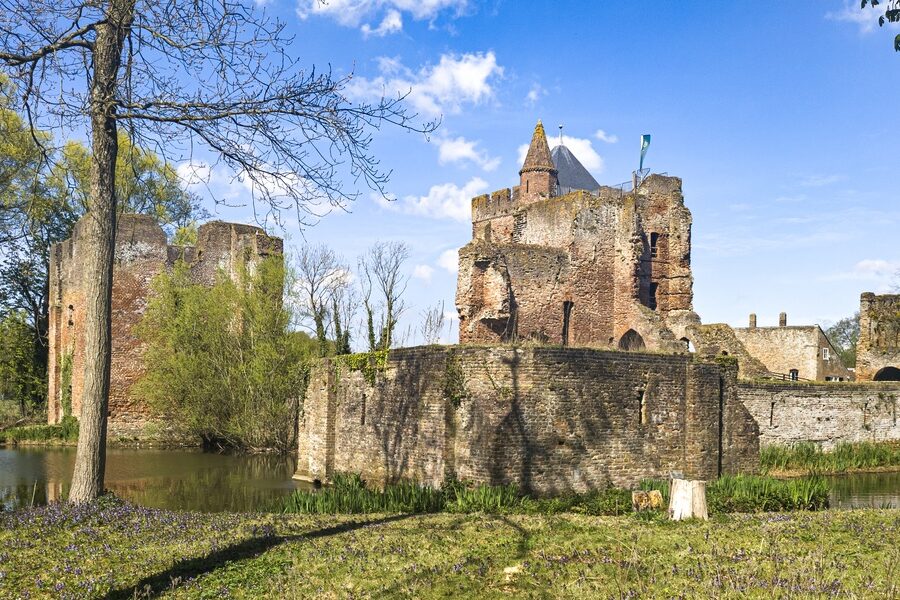Saudi Arabia’s landscape holds visible layers of human history: caravan cities, coastal forts and desert settlements that trace trade routes, faith and changing climates across millennia. Walking or studying these sites reveals how communities adapted to scarce water, strategic crossroads and coastal commerce.
There are 49 Ruins in Saudi Arabia, ranging from Al-‘Ula Old Town to Zubalah. The list records Region (province),Coordinates (lat, long),Era & protection for every entry so you can compare location, period and legal status — you’ll find below.
How reliable are the coordinates and protection statuses listed?
The coordinates and protection notes are compiled from official registers, UNESCO entries and recent surveys, but boundaries and legal designations can change; treat the list as a current starting point and confirm specifics (access, ownership, protections) with local authorities or updated national databases before visiting or publishing.
Can I visit these sites, and what should I prepare?
Many sites are visitable, but some lie on protected land, private property or remote desert tracks; check permissions with the Saudi heritage authorities, plan for extreme heat and limited services, hire a licensed guide for fragile or hard-to-reach ruins, and follow site rules to avoid damaging archaeological remains.
Ruins in Saudi Arabia
| Name | Region (province) | Coordinates (lat, long) | Era & protection |
|---|---|---|---|
| Hegra (Mada’in Salih) | Al-‘Ula | 26.7865, 37.9542 | Nabataean (1st c. CE). UNESCO World Heritage Site, fully accessible via booking. |
| Dadan (Al-Khuraybah) | Al-‘Ula | 26.6300, 37.9405 | Dadanite/Lihyanite (1st millennium BCE). Part of Al-‘Ula development, accessible. |
| Jabal Ikmah | Al-‘Ula | 26.6578, 37.9697 | Dadanite/Lihyanite. UNESCO inscription (Hegra component), accessible via booking. |
| Al-‘Ula Old Town | Al-‘Ula | 26.5975, 37.9189 | Islamic (12th c. CE onwards). Part of Al-‘Ula development, accessible. |
| Jubbah Rock Art | Ha’il Province | 28.0069, 40.9161 | Neolithic/Chalcolithic. UNESCO World Heritage Site, accessible. |
| Rajajil Standing Stones | Al-Jawf | 29.7911, 39.9920 | Chalcolithic (4th millennium BCE). Protected site, open access. |
| At-Turaif District (Old Diriyah) | Riyadh | 24.7333, 46.5742 | Islamic (18th c. CE). UNESCO World Heritage Site, fully accessible ticketed area. |
| Jeddah Old Town (Al-Balad) | Makkah Province | 21.4844, 39.1839 | Islamic (7th c. CE onwards). UNESCO World Heritage Site, open access. |
| Al-Ukhdud (Najran) | Najran | 17.5028, 44.1481 | Sabaean/Himyarite (1st millennium BCE). Protected archaeological park, accessible. |
| Qaryat al-Faw | Riyadh Province | 19.7619, 45.1581 | Pre-Islamic (Kindah Kingdom). Protected site, access may be limited/require permission. |
| Tayma | Tabuk Province | 27.6292, 38.5439 | Neolithic to Islamic. Major historical site, accessible. |
| Dumat al-Jandal | Al-Jawf | 29.8115, 39.8661 | Nabataean to Islamic. Historical site, accessible. |
| Bir Hima | Najran Province | 18.2500, 44.5167 | Neolithic to recent. UNESCO World Heritage Site, access via tour recommended. |
| Shuwaymis Rock Art | Ha’il Province | 26.1167, 40.5833 | Neolithic. UNESCO World Heritage Site, access via tour recommended. |
| Tarut Castle | Eastern Province | 26.5714, 50.0592 | 16th c. CE (on older site). Protected, accessible. |
| Uqair Fort | Eastern Province | 25.6481, 50.2189 | Ottoman/Early Saudi. Protected historical site, accessible. |
| Rabadha | Al-Qassim Province | 25.6558, 43.7431 | Early Islamic (Abbasid). Protected archaeological site. |
| Thaj | Eastern Province | 26.8833, 48.7167 | Hellenistic (c. 300 BCE). Protected archaeological site, fenced. |
| Ushaiger Heritage Village | Riyadh Province | 25.3408, 45.8122 | Islamic (pre-15th c. CE onwards). Accessible heritage village. |
| Qasr Marid | Al-Jawf | 29.8115, 39.8661 | Nabataean/Roman. Major feature of Dumat al-Jandal, accessible. |
| Al-Magar Site | Riyadh Province | 20.3333, 45.4167 | Neolithic (c. 9,000 years old). Protected site, not publicly accessible. |
| Zubalah | Northern Borders Province | 29.4125, 43.6814 | Early Islamic (Abbasid). Protected remote ruins. |
| Fayd | Ha’il Province | 27.1147, 42.5208 | Early Islamic. Protected historical ruins. |
| Al-Hijr Railway Station | Al-‘Ula | 26.8183, 37.9408 | Ottoman (early 20th c. CE). Part of Hegra site, accessible. |
| Qasr Ibrahim | Al-Hofuf, Al-Ahsa | 25.3781, 49.5881 | Ottoman (16th c. CE). Protected monument, accessible. |
| Jawatha Mosque | Al-Ahsa | 25.4678, 49.6739 | Early Islamic (7th c. CE). Active mosque, original ruins visible. |
| Al-Muwailih Fort | Tabuk Province | 27.6833, 35.4833 | Mamluk/Ottoman. Protected historical ruin. |
| Dhee Ayn Marble Village | Al-Baha | 19.9231, 41.4589 | Islamic (c. 16th c. CE). Heritage site, accessible. |
| Raghdan Forest Fort | Al-Baha | 20.0050, 41.4789 | Early 20th c. CE. Ruin in a public park, accessible. |
| Al-Ghat Heritage Village | Riyadh Province | 26.0167, 44.9667 | Islamic (18th-20th c. CE). Accessible heritage village. |
| Old Ad-Dhahirah | Al-Baha | 19.8510, 41.5222 | Islamic (c. 400 years old). Protected ruins. |
| Al-Aan Palace | Najran | 17.4925, 44.1311 | Islamic (17th c. CE). Heritage site, accessible. |
| Sadd al-Bint Dam | Khaybar, Medina | 25.6983, 39.2942 | Pre-Islamic (c. 6th c. BCE). Remote archaeological site. |
| Khaybar Forts | Medina Province | 25.6894, 39.2958 | Ancient to Islamic. Ruins of an ancient settlement, accessible. |
| Qasr al-Sa’idi | Tayma, Tabuk | 27.6258, 38.5483 | Iron Age (1st millennium BCE). Protected ruin within Tayma. |
| Al-Sirrein | Makkah Province | 20.5833, 40.4000 | Early Islamic. Protected archaeological site. |
| Farasan Islands (Al-Qassar) | Jizan Province | 16.7578, 42.0622 | Roman/Aksumite. Accessible heritage village. |
| Kinda tombs | Al-Faw, Riyadh Province | 19.7619, 45.1581 | Pre-Islamic (Kindah Kingdom). Part of Qaryat al-Faw site. |
| Hima Wells | Najran Province | 18.2500, 44.5167 | Ancient. Part of Bir Hima UNESCO site. |
| Uyun al-Jiwa | Al-Qassim Province | 26.5500, 43.5167 | Pre-Islamic. Site of ancient rock art and inscriptions. |
| Darb Zubaydah pools | Various | 29.4125, 43.6814 | Early Islamic (Abbasid). Protected remnants along a historic route. |
| Wabar Craters | Rub’ al Khali | 21.5039, 50.4731 | Natural feature with archaeological myth. Remote, requires expedition. |
| Qasr al-Thuraya | Al-‘Ula | 26.8833, 37.8167 | Nabataean. Remote ruin, part of the wider Hegra landscape. |
| Al-Bid’ (Madyan) | Tabuk Province | 28.5833, 34.9833 | Nabataean/Midianite. Protected archaeological site. |
| Qurayyah | Tabuk Province | 28.7833, 36.9667 | Late Bronze/Early Iron Age. Protected archaeological site. |
| Haddaj Well | Tayma, Tabuk | 27.6325, 38.5469 | Ancient. Functioning historical well within Tayma. |
| Qasr Ibn Rumman | Hail | 27.5222, 41.6917 | 19th c. CE. Ruin within modern city. |
| Al-Souda Petroglyphs | Riyadh Province | 24.6333, 44.7500 | Neolithic. Rock art site. |
| Jabal al-Lawz | Tabuk Province | 28.6536, 35.3056 | Bronze Age. Disputed site, military area, access heavily restricted. |
Images and Descriptions
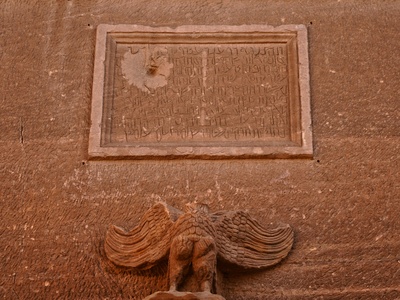
Hegra (Mada’in Salih)
The famous southern capital of the Nabataean Kingdom, featuring over 111 monumental rock-cut tombs, including the iconic Qasr al-Farid. A must-see site for its stunning preservation and historical significance on the ancient incense route.
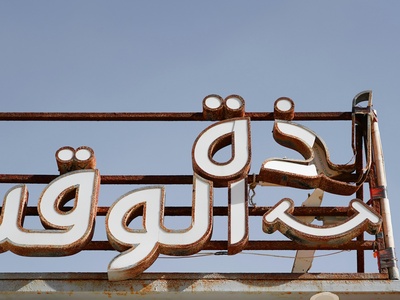
Dadan (Al-Khuraybah)
The capital of two successive pre-Islamic kingdoms. The site is renowned for its iconic Lion Tombs, carved high into the red-rock cliffs above the ruins of the ancient city, a testament to its former power and wealth.
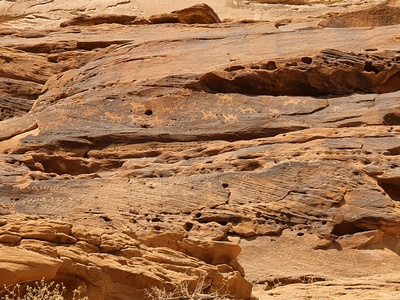
Jabal Ikmah
An incredible open-air library of ancient inscriptions carved into sandstone cliffs. These petroglyphs offer profound insights into the beliefs, rituals, and daily life of the Dadanite and Lihyanite civilizations that thrived in the oasis.
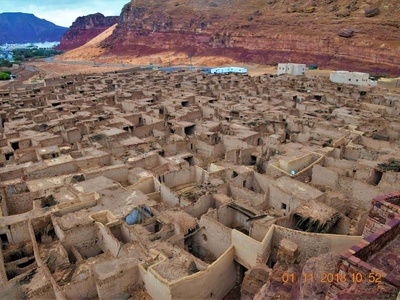
Al-‘Ula Old Town
A labyrinthine mudbrick town with nearly 900 houses and 400 shops, inhabited until the 1980s. Visitors can wander its narrow alleys and see the ancient Tantora sundial, which governed the seasonal planting cycle for centuries.
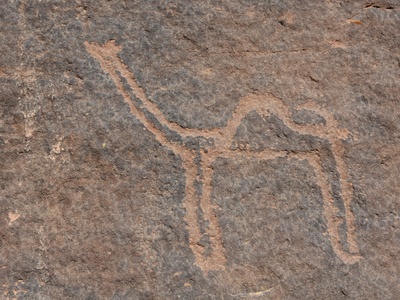
Jubbah Rock Art
One of the most significant petroglyph sites in the world. It showcases thousands of detailed carvings of humans, ibex, oryx, and cattle from a time when the region was a lush savanna over 7,000 years ago.
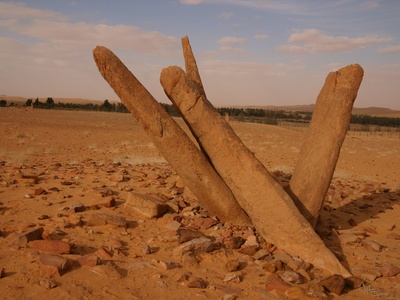
Rajajil Standing Stones
Often called the “Stonehenge of Saudi Arabia,” this enigmatic site consists of over 50 groups of tall, weathered sandstone pillars. Believed to have had astronomical or ritualistic purposes, their true function remains a fascinating mystery.
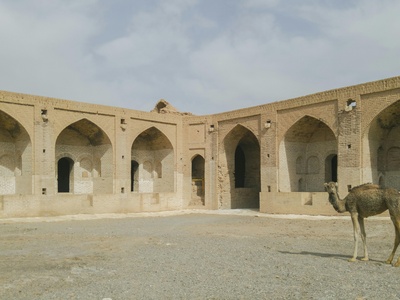
At-Turaif District (Old Diriyah)
The beautifully restored first capital of the Saudi Dynasty. This mudbrick citadel is a masterpiece of Najdi architecture, featuring impressive palaces, mosques, and fortifications that tell the story of the birth of the modern Saudi state.
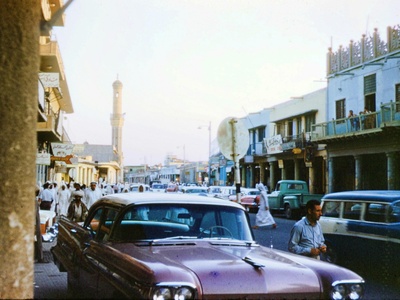
Jeddah Old Town (Al-Balad)
The historic heart of Jeddah and the traditional port for pilgrims to Mecca. It is famous for its unique tower houses built from coral stone, adorned with intricate wooden latticework balconies known as Roshan.
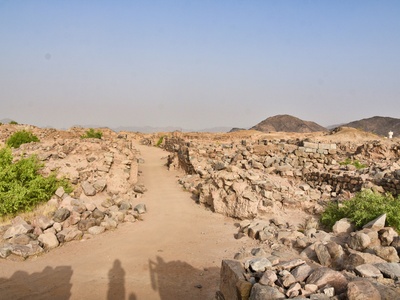
Al-Ukhdud (Najran)
The ruins of an ancient walled city, famously mentioned in the Quran. Visitors can see its massive stone walls, the foundations of buildings, and numerous well-preserved inscriptions carved into the citadel’s large rectangular stones.
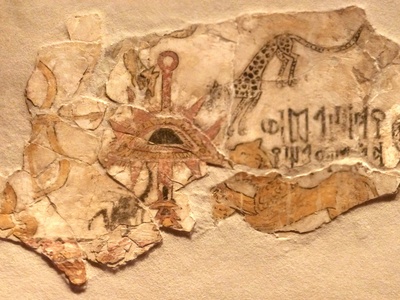
Qaryat al-Faw
The former capital of the powerful Kindah Kingdom, a vital trading post on the incense route. Excavations have revealed a bustling city with a market (souq), temples, tombs, and remarkably preserved frescoes depicting its cosmopolitan life.
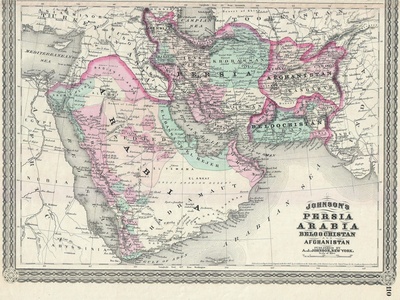
Tayma
A historically rich oasis city continuously inhabited for millennia. Its key ruins include the massive ancient city wall, the legendary Bir Haddaj well, and Qasr Al-Ablaq fortress, a testament to its long history as a regional power.
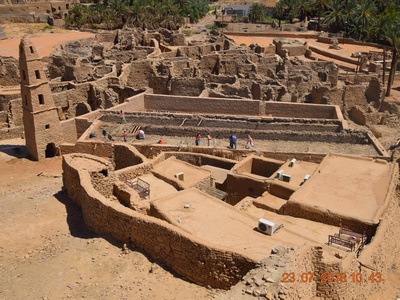
Dumat al-Jandal
An ancient oasis city featuring the imposing Qasr Marid, a fortress with origins predating the Roman era. Adjacent is the Omar Ibn al-Khattab Mosque, one of the oldest surviving mosques, known for its distinct stone minaret.
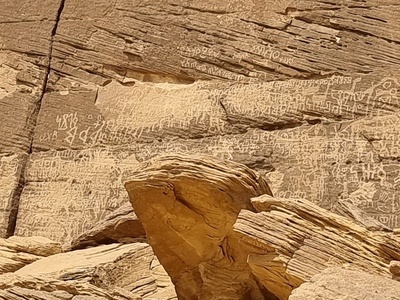
Bir Hima
A vast rock art complex with tens of thousands of petroglyphs spanning 7,000 years. The site lies on an ancient caravan route and features depictions of hunting, wildlife, and inscriptions in various ancient scripts.
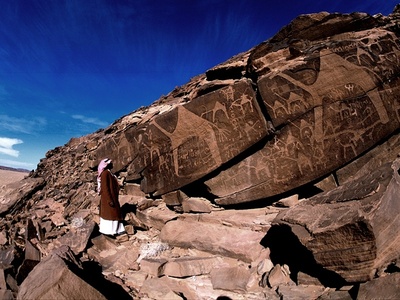
Shuwaymis Rock Art
A stunning rock art site located in a remote valley. Its petroglyphs are famous for depicting big cats like lions and cheetahs, providing evidence of the diverse fauna that roamed the Arabian Peninsula thousands of years ago.
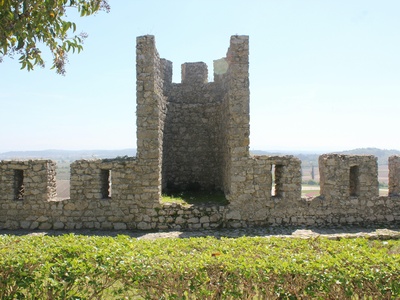
Tarut Castle
A small, photogenic fortress located on an island with deep history. The castle itself is from the 16th century, but it was built atop a tell (mound) that contains artifacts from the 5,000-year-old Dilmun civilization.
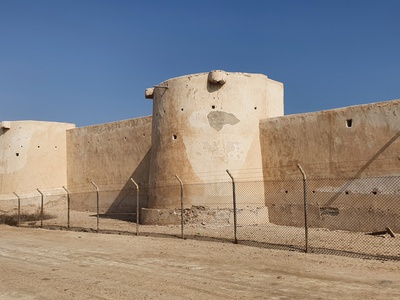
Uqair Fort
A well-preserved coastal fortress and port on the Persian Gulf. For decades in the early 20th century, it was the main seaport for Riyadh and a key center for customs, trade, and diplomacy for the emerging Saudi state.
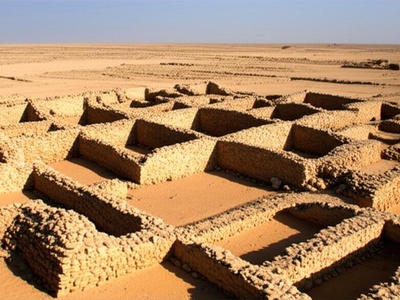
Rabadha
An important, well-excavated city on the Darb Zubaydah pilgrimage route from Iraq. The ruins include the foundations of a large palace, a mosque, houses, and workshops, offering a glimpse into life on the Hajj trail.
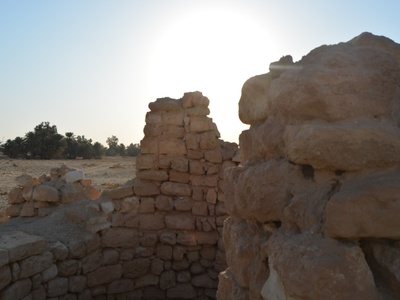
Thaj
The ruins of what was once one of the largest and most important cities in ancient Arabia. Though largely unexcavated, surface remains and findings from royal tombs point to a major urban center with links to the Hellenistic world.
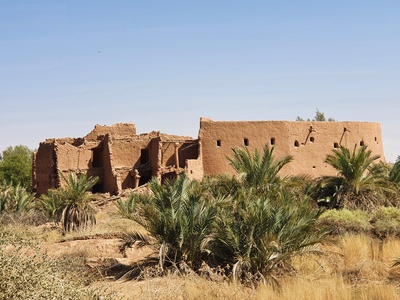
Ushaiger Heritage Village
One of the oldest and best-preserved mudbrick settlements in the Najd region. Visitors can walk through its maze of covered alleyways, admire the unique architecture of its homes and mosques, and visit its small community-run museum.
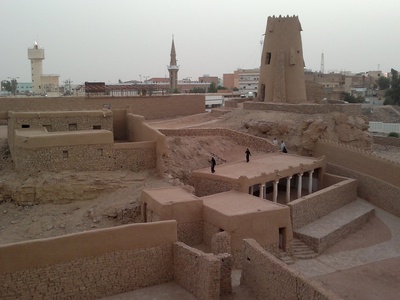
Qasr Marid
A formidable ancient fortress in Dumat al-Jandal, dating back to at least the 1st century AD. Its high oval-shaped stone walls dominate the old city, a testament to its strategic importance through successive historical eras.
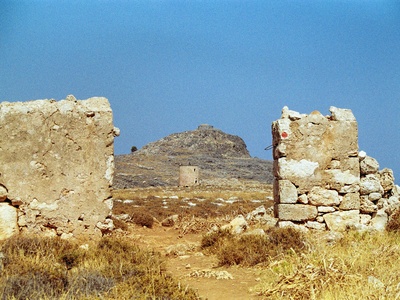
Al-Magar Site
A highly significant but remote site that has yielded artifacts suggesting horse domestication may have occurred 9,000 years ago. Its discovery has pushed back the timeline of advanced Neolithic culture in the Arabian Peninsula.
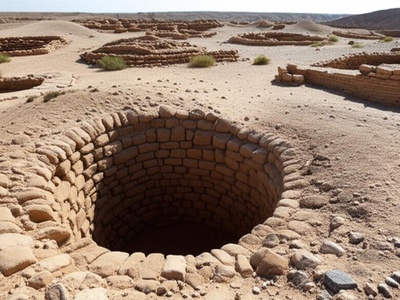
Zubalah
A key stop on the Darb Zubaydah pilgrimage route, now a field of ruins in the desert. Visible remains include the foundations of a fort, a mosque, and numerous cisterns and wells that once quenched the thirst of thousands of pilgrims.
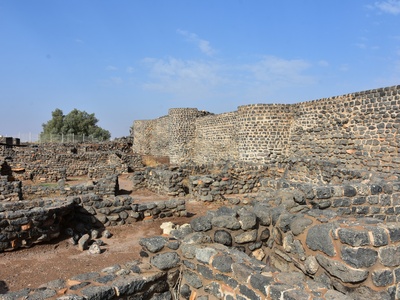
Fayd
A major city and administrative center on the Darb Zubaydah pilgrimage route. The extensive ruins, including the remains of a large fortress, indicate its past importance as a fortified stop between Kufa and Mecca.
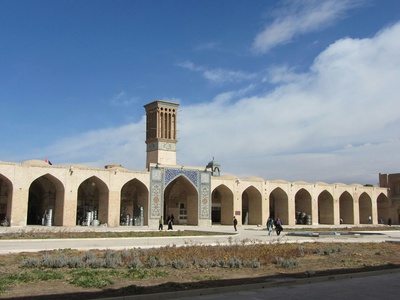
Al-Hijr Railway Station
Part of the historic Hejaz Railway built by the Ottomans to connect Damascus and Medina. The well-preserved station includes a workshop, locomotive sheds, and a small fort, offering a glimpse into the region’s more recent past.
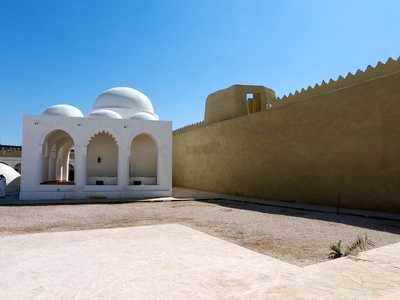
Qasr Ibrahim
A large, imposing fortress and mosque complex in the heart of Hofuf. It combines Islamic and military architecture and served as the main Ottoman garrison in the Al-Ahsa region for centuries.
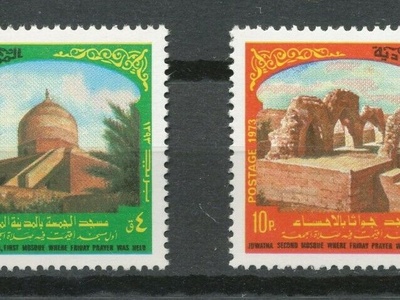
Jawatha Mosque
Site of the second mosque in Islam where Friday prayers were held. While the modern structure is new, it incorporates parts of the original foundations, making it one of the oldest mosque sites in the world.
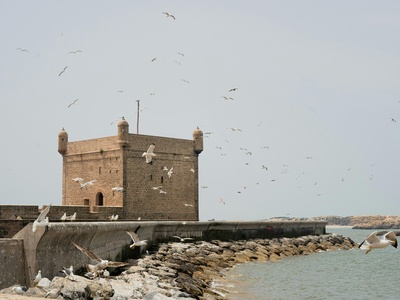
Al-Muwailih Fort
A large, well-preserved fort on the Red Sea coast that was part of the Egyptian Hajj route. Its strong walls, corner towers, and internal structures highlight its importance in protecting pilgrims and trade caravans.
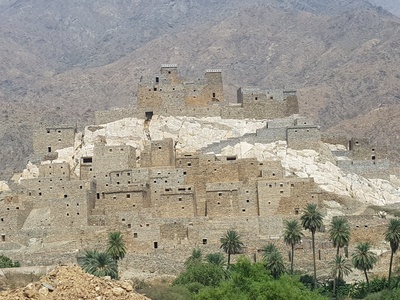
Dhee Ayn Marble Village
A striking village of stone houses built atop a white marble hill, often appearing to glow in the sun. The now-abandoned village overlooks a lush oasis, showcasing the unique traditional architecture of the Asir region.
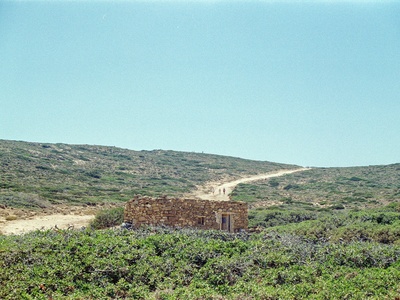
Raghdan Forest Fort
A small, picturesque stone watchtower and fort ruin located within the popular Raghdan Forest Park. It offers panoramic views of the surrounding valleys and mountains and is a remnant of the region’s more recent tribal history.
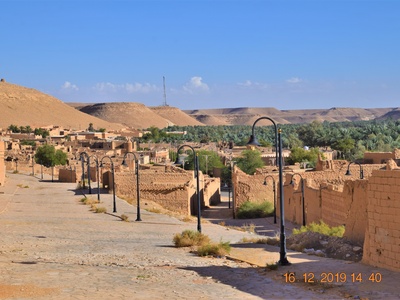
Al-Ghat Heritage Village
A beautifully restored traditional Najdi village known for its impressive Al-Ghat Fort and Emirate Palace. The site provides a well-preserved example of the mudbrick architecture and oasis life of central Arabia.
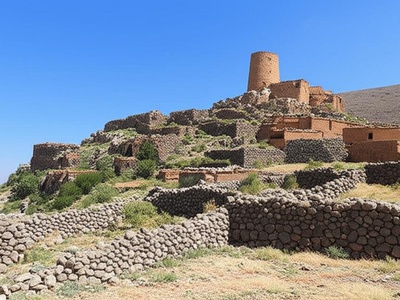
Old Ad-Dhahirah
Ruins of a stone village built on a rocky outcrop, typical of the Sarawat mountains. The site includes the remains of houses, a mosque, and defensive towers, illustrating the fortified settlements of the region.
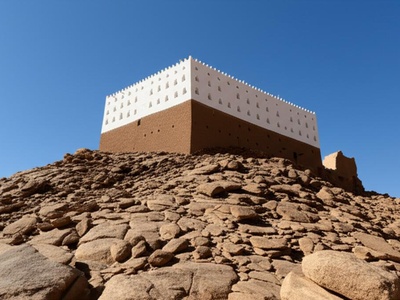
Al-Aan Palace
A distinctive mudbrick palace built atop a granite hill overlooking the Najran valley. Its unique design, with white-painted upper levels, makes it a prominent landmark and a fine example of traditional Najrani architecture.
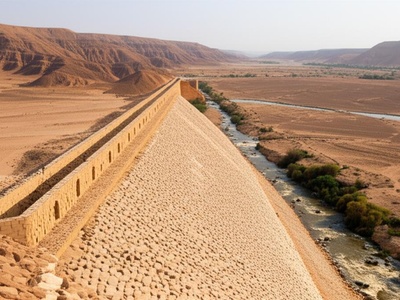
Sadd al-Bint Dam
An enormous and remarkably well-preserved pre-Islamic dam near the Khaybar oasis. Its massive stone construction, stretching across a wadi, is a stunning feat of ancient engineering designed to manage precious water resources.
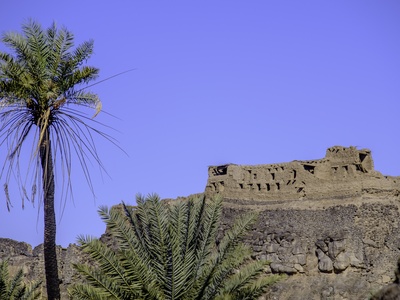
Khaybar Forts
The ruins of the historic Khaybar oasis, famous for its ancient Jewish settlements and a key battle in early Islamic history. Visitors can explore the remains of mudbrick fortresses, houses, and complex irrigation systems.
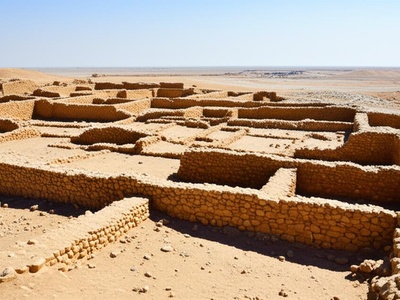
Qasr al-Sa’idi
The remains of a large palace complex within the ancient city of Tayma. Excavations have revealed substantial stone walls and structures from the period when Tayma was a powerful and prosperous regional capital.
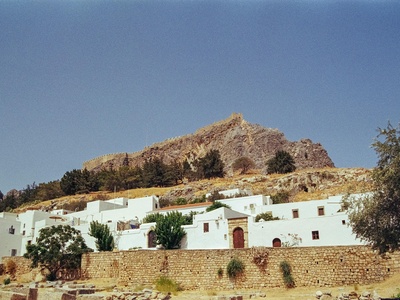
Al-Sirrein
The ruins of a medieval Islamic port city on the Red Sea coast, south of Jeddah. Excavations have uncovered a mosque, houses, and imported ceramics, indicating it was a significant commercial center from the 9th to 12th centuries.
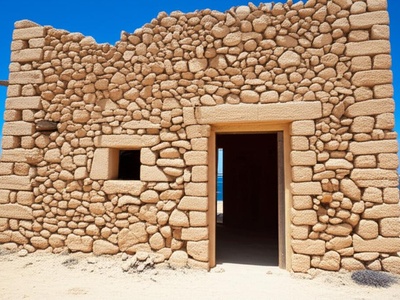
Farasan Islands (Al-Qassar)
An ancient village on the Farasan Islands, built with coral stone. The site has Roman and South Arabian inscriptions, suggesting it was an important maritime trading post in antiquity, likely known as Portus Ferresanus.
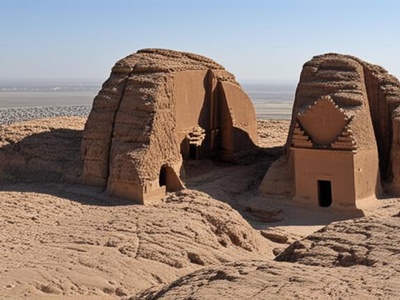
Kinda tombs
A series of well-preserved rock-cut tombs on the cliffs overlooking the ancient city of Qaryat al-Faw. These burial sites belonged to the nobility of the Kindah Kingdom and contained rich grave goods, including frescoes and textiles.
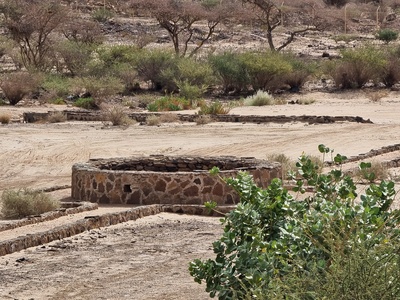
Hima Wells
A series of ancient wells, some still in use, scattered throughout the Bir Hima rock art complex. These wells were a critical water source on the ancient caravan routes, making the area a vital hub for travelers and merchants.
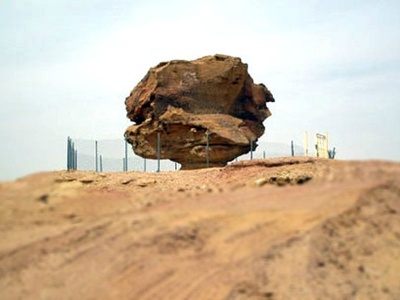
Uyun al-Jiwa
An area known for its numerous Thamudic and Nabataean inscriptions carved onto rock faces. It was the homeland of the pre-Islamic poet Antarah ibn Shaddad, and his legendary rock is a popular landmark for visitors.
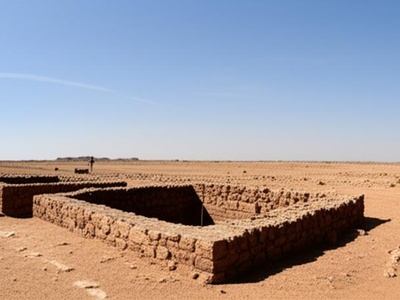
Darb Zubaydah pools
A series of wells, cisterns, and forts that mark the famous pilgrimage route from Kufa, Iraq, to Mecca. Financed by Zubaydah, wife of Caliph Harun al-Rashid, these ruins are scattered across the northern deserts of Saudi Arabia.
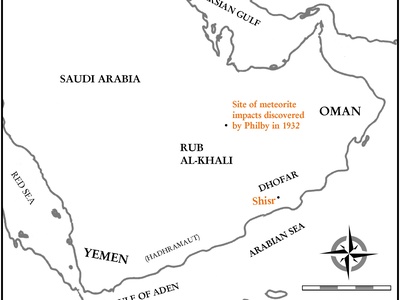
Wabar Craters
Site of meteorite impact craters, once believed to be the ruins of a legendary lost city, “Iram of the Pillars”. While the city is myth, the site contains impact glass and iron fragments from the celestial event.
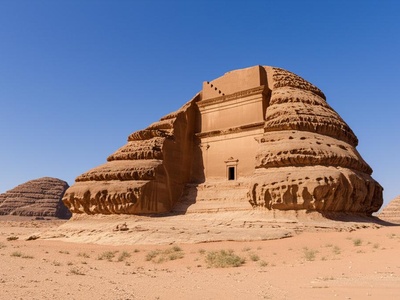
Qasr al-Thuraya
A lesser-known but significant Nabataean tomb far to the north of the main Hegra cluster. Its isolation and unique design on a solitary rock outcrop make it a compelling destination for dedicated explorers of the region.
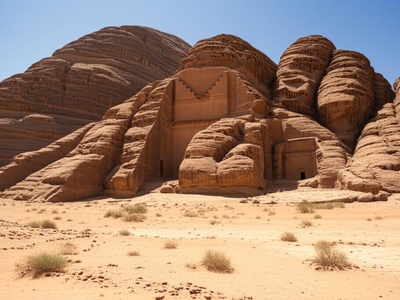
Al-Bid’ (Madyan)
Believed by some to be the biblical land of Midian where Moses took refuge. The archaeological site features impressive Nabataean tombs carved into the rock face, similar to those at Hegra but on a smaller scale.
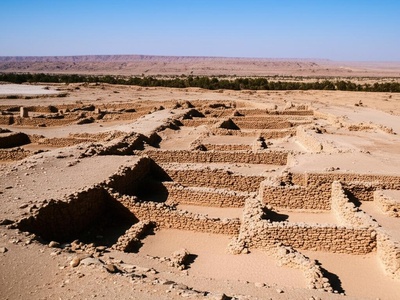
Qurayyah
An extensive archaeological site with remains of a large, walled oasis city. The unique Qurayyah Painted Ware pottery found here suggests it was a major center for manufacturing and trade in the ancient Near East.
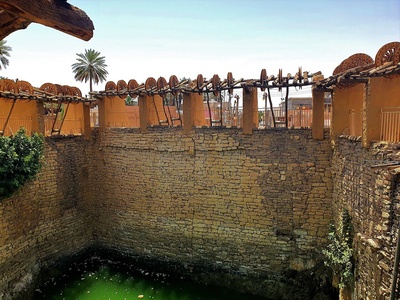
Haddaj Well
One of the most famous and largest ancient wells in the Arabian Peninsula. Believed to be thousands of years old and mentioned in Babylonian texts, it has been a critical source of life for the Tayma oasis for millennia.
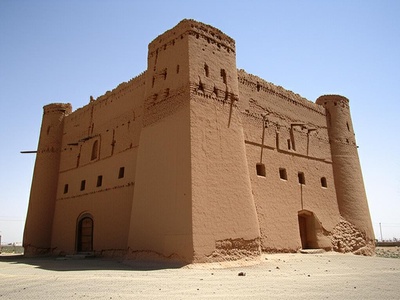
Qasr Ibn Rumman
The ruins of a large mudbrick palace that was the seat of the Rashidi emirs in Ha’il. Though partially ruined, its remaining towers and walls evoke the power of the dynasty that once ruled much of central Arabia.
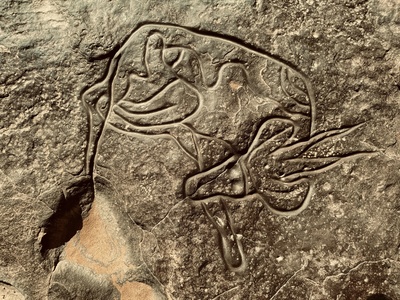
Al-Souda Petroglyphs
A significant rock art site featuring carvings of ostriches, ibex, and human figures. It provides evidence of prehistoric settlement in the central Arabian plateau, an area now dominated by arid desert landscapes.
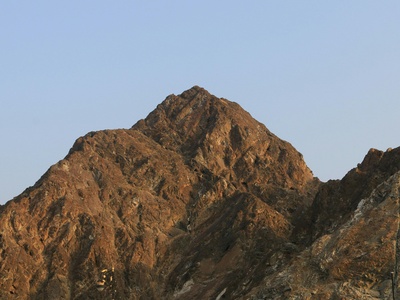
Jabal al-Lawz
A mountain controversially proposed by some as the biblical Mount Sinai. The area contains Bronze Age cairns, petroglyphs, and remains of ancient structures, though its biblical connection is rejected by mainstream scholars.

